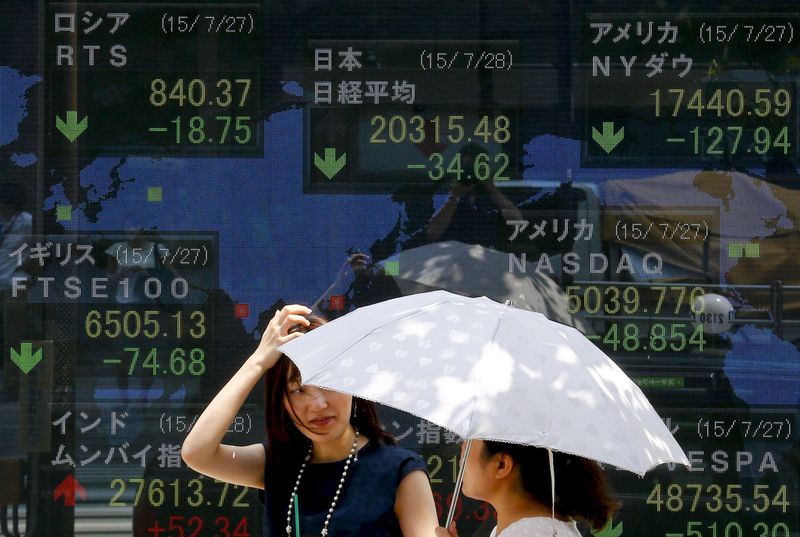This post was originally published on this site
https://i-invdn-com.investing.com/news/LYNXNPEB6R07D_M.jpg
Investing.com – Asia Pacific stocks were mostly down Monday morning as investors digested the possibility of a slowdown in the Chinese economic recovery from COVID-19.
They also continue to keep an eye on possible tapering talks caused by price pressure and await key U.S. economic data, including the Institute of Supply Management (ISM) manufacturing PMI to be released on Tuesday, to gauge the economic recovery.
China’s Shanghai Composite was down 0.23% by 10:45 PM ET (2:45 AM GMT) while the Shenzhen Component was up 0.29%. Data released earlier in the day said that the purchasing managers’ index (PMI) was 51 and the non-manufacturing PMI was 55 in May. Although both figures remained above the 50-mark indicating growth, the manufacturing PMI was slightly below expectations.
The offshore yuan slipped after Sheng Songcheng, former director of People’s Bank of China statistics department, said the rise of yuan will not last, while the central bank said separately on Sunday that the currency may depreciate in the future.
Hong Kong’s Hang Seng Index was down 0.29%.
Japan’s Nikkei 225 fell 0.66%. Data released earlier in the day said the Industrial Production for April grew by 2.5% month-on-month, surpassing March’s 1.7% but below 4.1% in forecasts prepared by investing.com. Its April Retail Sales also increased 12.0% year-on-year, but below 15.3% in forecasts prepared by investing.com.
South Korea’s KOSPI inched up 0.06%.
In Australia, the ASX 200 edged down 0.14% as investors await the Reserve Bank of Australia’s policy decision, to be handed down on Tuesday.
Investors remain concerned that the ongoing economic recovery from COVID-19 and stimulus measures around the world will lead to runaway inflation, which will force central banks to reduce support earlier than expected.
“There is likely more upside to go on the inflation scare front in the months ahead as base effects, the lagged impact of commodity price hikes and bottlenecks continue to feed through, but there are now a few more signs that it will be transitory,” Shane Oliver, head of investment strategy and chief economist at AMP (OTC:AMLTF) Capital, said in a note.
A slew of U.S. Federal Reserve officials is due to speak on Wednesday, including Philadelphia Fed President Patrick Harker, Chicago Fed President Charles Evans, Atlanta Fed President Raphael Bostic and Dallas Fed President Robert Kaplan. This is the last opportunity for officials to speak on policy ahead of a blackout period starting Jun. 5 ahead of the Fed’s next meeting on Jun. 16.
On the data front, investors now await U.S. data for May, including Nonfarm Payrolls and the Unemployment Rate, due on Friday.
Investors continue to bet that the Fed will only start tapering talks until a significant improvement in the labor market.
“The labor market would still be considered a long way from being recovered…in our opinion, the data are unlikely to convince Fed Chair Powell that progress has been substantial enough just yet to start signaling tapering,” NatWest Market economist Kevin Cummins (NYSE:CMI) told Reuters.

